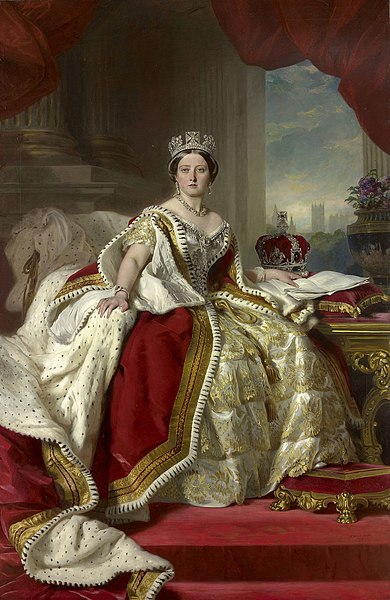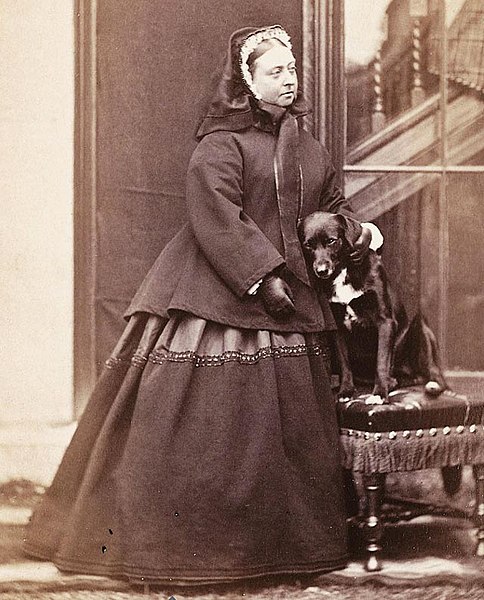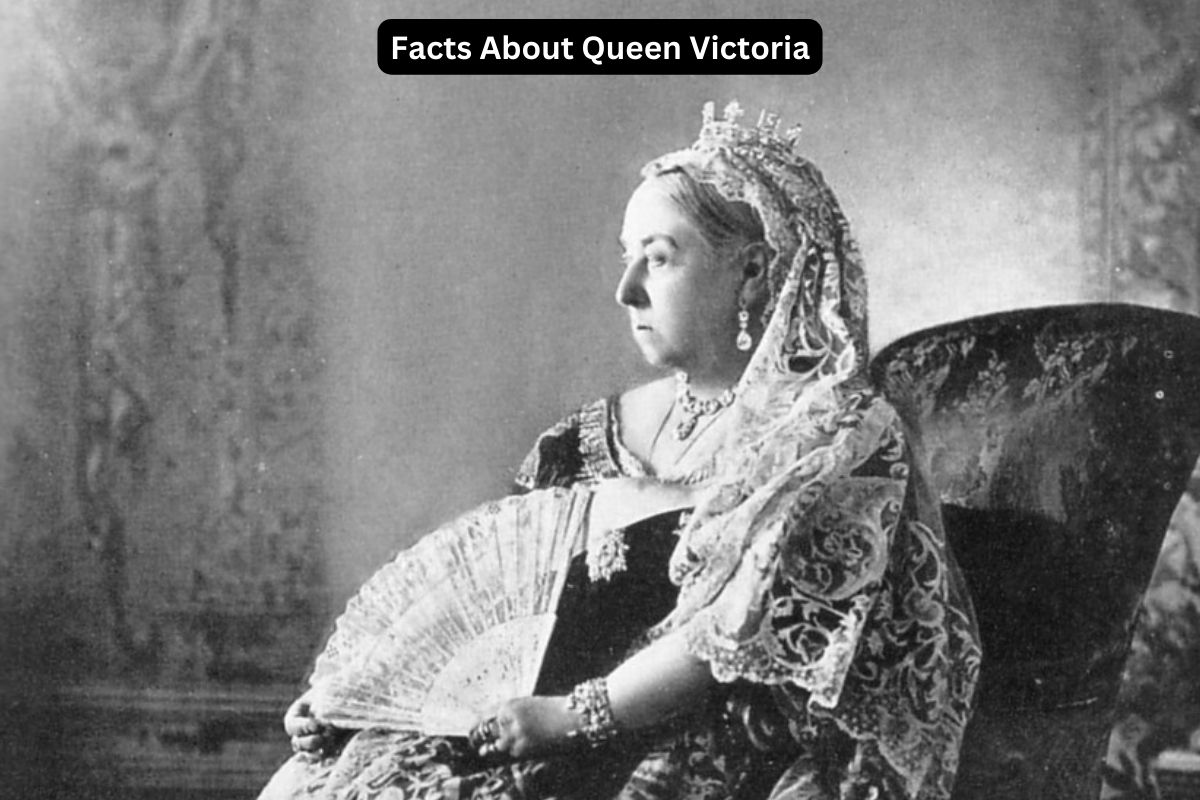Queen Victoria, one of the most iconic figures in British history, reigned for over six decades during a period of remarkable transformation and expansion.
Her life and reign, spanning from 1819 to 1901, left an indelible mark on the United Kingdom and the world.
In this article, we delve into the fascinating life of Queen Victoria, exploring her early years, her influential marriage to Prince Albert, the expansion of the British Empire under her rule, her profound impact on fashion, and the enduring legacy of the Victorian era she epitomized.
Join us on a journey through the life and times of Queen Victoria, a monarch whose reign shaped an entire era.
Queen Victoria Facts
1. Queen Victoria reigned for over 63 years, making her the longest-reigning British monarch at the time
Queen Victoria’s reign is one of the most remarkable in British history. She ascended to the throne on June 20, 1837, at the age of 18, following the death of her uncle, King William IV. Her reign lasted for over 63 years, until her death on January 22, 1901.
Also Read: Victorian Era Timeline
This extraordinary span made her the longest-reigning British monarch in history at that time. Her reign, known as the Victorian era, witnessed significant changes in society, politics, and the world.

2. She was born on May 24, 1819, in Kensington Palace, London
Queen Victoria was born on May 24, 1819, in Kensington Palace, London. She was the daughter of Prince Edward, Duke of Kent, and Princess Victoria of Saxe-Coburg-Saalfeld.
Her birth was a significant event because it was the end of an era of regency, with her uncle King George IV serving as the reigning monarch. Victoria’s father died when she was just eight months old, leaving her as the heir presumptive to the throne.
Her upbringing was carefully overseen by her mother and her close adviser, Sir John Conroy, who played a role in Victoria’s early education.
3. Queen Victoria married her cousin, Prince Albert, in 1840, and they had nine children together
One of the most notable events in Queen Victoria’s life was her marriage to her first cousin, Prince Albert of Saxe-Coburg and Gotha, which took place on February 10, 1840.
The marriage was not only a personal union but also a politically advantageous one, strengthening ties between the British and European royal families.
Also Read: Timeline of Queen Victoria
Victoria and Albert had a loving and devoted relationship, characterized by mutual respect and collaboration. Their marriage produced nine children, who went on to marry into various European royal families, earning Queen Victoria the title “Grandmother of Europe.”
Prince Albert played a significant role as her adviser and consort, influencing her political decisions and supporting various social and cultural initiatives during her reign.
4. Her reign oversaw the expansion of the British Empire, earning her the title “Empress of India”
Queen Victoria’s reign coincided with a period of significant expansion for the British Empire. Her reign saw the acquisition of numerous territories and the establishment of British dominance in various parts of the world.
One of the most significant events was the Indian Mutiny of 1857, after which Victoria was declared the “Empress of India” in 1876. India became the crown jewel of the British Empire during her reign.
Additionally, British territories expanded in Africa, Asia, and the Pacific, making the British Empire the largest empire in history during that time.

5. The Victorian era, named after her, was marked by significant social and technological changes
Queen Victoria’s reign is synonymous with the Victorian era, a period known for its distinctive characteristics. This era was marked by industrialization, technological advancements, and significant social and cultural changes.
The Industrial Revolution transformed the British economy and society, leading to urbanization, the growth of factories, and the rise of the middle class. Scientific discoveries and innovations in transportation, such as the development of the steam engine and railways, also defined this era.
Furthermore, the Victorian era was known for its strict moral and social values, as well as the growth of the British Empire.
6. Queen Victoria popularized the tradition of wearing white wedding dresses
Queen Victoria had a substantial impact on fashion trends of her time. Her choice to wear a white wedding dress when she married Prince Albert in 1840 set a new fashion standard. Prior to her wedding, colored dresses were more common for brides.
Her decision to wear white symbolized purity and innocence and popularized the tradition of brides wearing white gowns. This tradition continues to this day in many Western cultures, making Queen Victoria a lasting influence on wedding fashion.
7. She entered a period of mourning and wore black after Prince Albert’s death in 1861
Queen Victoria’s life took a somber turn with the death of her beloved husband, Prince Albert, in 1861. His death at the age of 42 was a profound loss for her, and she was deeply affected by grief.
In mourning for her husband, Victoria adopted a strict code of dress and behavior, commonly wearing black attire for the rest of her life. This period of mourning also influenced societal customs and mourning practices during the Victorian era.

8. In 1897, she celebrated her Diamond Jubilee, marking 60 years on the throne
In 1897, Queen Victoria celebrated her Diamond Jubilee, marking an incredible 60 years on the throne. This milestone was a significant event, as it showcased her enduring popularity and the stability of the British monarchy under her reign.
The Diamond Jubilee was marked by elaborate celebrations and parades throughout the British Empire, and it served as a testament to the Queen’s long and prosperous rule.
9. Queen Victoria held the record for the longest-serving British monarch until Queen Elizabeth II surpassed her in 2015
Queen Victoria’s reign was characterized by several records. Her Golden Jubilee in 1887 marked 50 years on the throne, and at that time, no British monarch had reached such a milestone.
Her Diamond Jubilee in 1897 surpassed this record, setting a new standard for monarchs and earning her a place in history as one of the longest-reigning monarchs in the world.
It wasn’t until Queen Elizabeth II surpassed her as the longest-reigning British monarch in 2015 that Victoria’s record was broken.
10. Her reign left a lasting legacy, shaping the history of the British monarchy and the world during the 19th century
Queen Victoria’s legacy is enduring. Her reign left an indelible mark on the United Kingdom and the world during the 19th century. She presided over a period of significant change and progress, both socially and technologically, which defined the Victorian era.
Additionally, the term “Victorian” is often used to describe the strict moral and social values of the period, as well as the artistic and literary achievements that emerged during her reign. Victoria’s influence extended beyond her lifetime, shaping the course of history and culture well into the 20th century.
